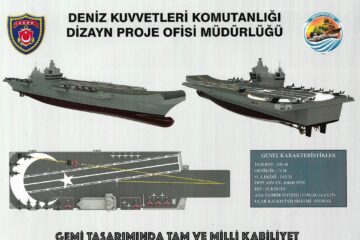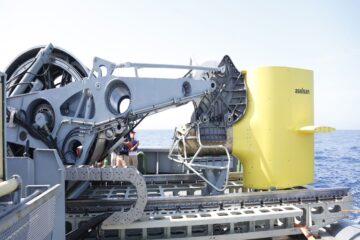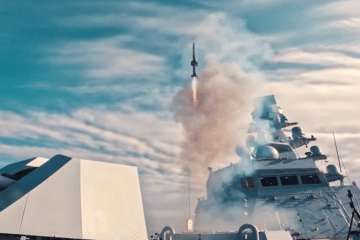The test firing of the SIPER surface-to-air missile, which will form the backbone of Turkiye’s air defense in the near future, was carried out by Turkish missile manufacturer Roketsan in cooperation with Aselsan and the Scientific and Technological Research Council of Turkiye (TUBITAK SAGE).
During the test firing, the supersonic unmanned target (Banshee 80) drone was detected by the EIRS radar produced by Aselsan, and the missile hit the target at a range of more than 90 kilometers and an altitude of more than 26,000 feet. The first test-firing of the SIPER Block-0 missile was conducted in November 2021.
The head of SSB, Ismail Demirci, shared the video of the test-launch with a video on his Twitter account.
“Our long-range air defense missile system SIPER is rising step by step. In the last test firing of SIPER, it has shown that it can engage high-speed targets at 100 km of range.”
Ismail Demir, Head of SSB
In an interview with Turkish state broadcaster TRT TV in September 2021, Ismail Demir stated that SIPER will be an S-400-equivalent air defense system and that they are working on a 5-year schedule to meet the requirements of such a system.
The SIPER missile is of great importance in meeting Turkiye’s need for layered air defense with indigenous resources. Designed to protect strategic facilities against enemy attacks as part of regional air defense, SIPER will provide long-range air defense in a distributed architecture.
In this context, mass production and delivery of low-altitude Korkut air defense gun systems began and continues to this day. Subsequently, the Sungur low-altitude air defense missile systems, launched from the portable vehicle and MANPAD, were put into service. While the first deliveries of Hisar-A+ (low altitude) and Hisar-O+ (medium altitude) air defense systems are being made, their mass production continues. SIPER stands out with its long range beyond all these systems in this layered concept.

According to the press release of SSB, under the SIPER project, which is being carried out in partnership with ASELSAN, ROKETSAN, and TÜBİTAK SAGE, the first delivery is scheduled for 2023. Subsequently, the development process of new models that can be effective against both air-breathing targets and ballistic missiles up to a range of 150 km (SIPER Block-III) will be completed and become operational.
What’s the relation of SIPER with the Turkish Navy?

Although there is no official statement, the Turkish Navy’s future TF-2000 air-defence destroyer, scheduled to enter service after 2027, is expected to be armed with the SIPER air defense system. In that case, further variants of the SIPER missile (perhaps Block-2 or Block-3) with increased range could be considered for the TF-2000.
After the U.S. broke the partnership with Turkiye on the F-35 project and imposed CAATSA sanctions over Turkiye due to the purchase of the Russian S-400 air defense system, Turkiye focused on indigenous solutions for major projects. In this case, Roketsan has accelerated the development of MIDLAS, an indigenous vertical launch system, and the first delivery of MIDLAS is expected to be completed before TCG Istanbul enters service, scheduled for 2023.
MIDLAS will be able to host and launch a variety of missiles, including HISAR family air defense missiles, which form the basis of the SIPER (the former name of SIPER is HISAR-U, which stands for long-range HISAR). Therefore, the SIPER missiles fired from the 64-cell MIDLAS VLS appear to be a compatible solution for the TF-2000 destroyers.
On the other hand, Turkiye is currently in talks with France and Italy for EUROSAM SAMP/T air defence system, but there is no agreement yet. If the sides would reach an agreement, ASTER 30 missile could be another option for TF-2000.






